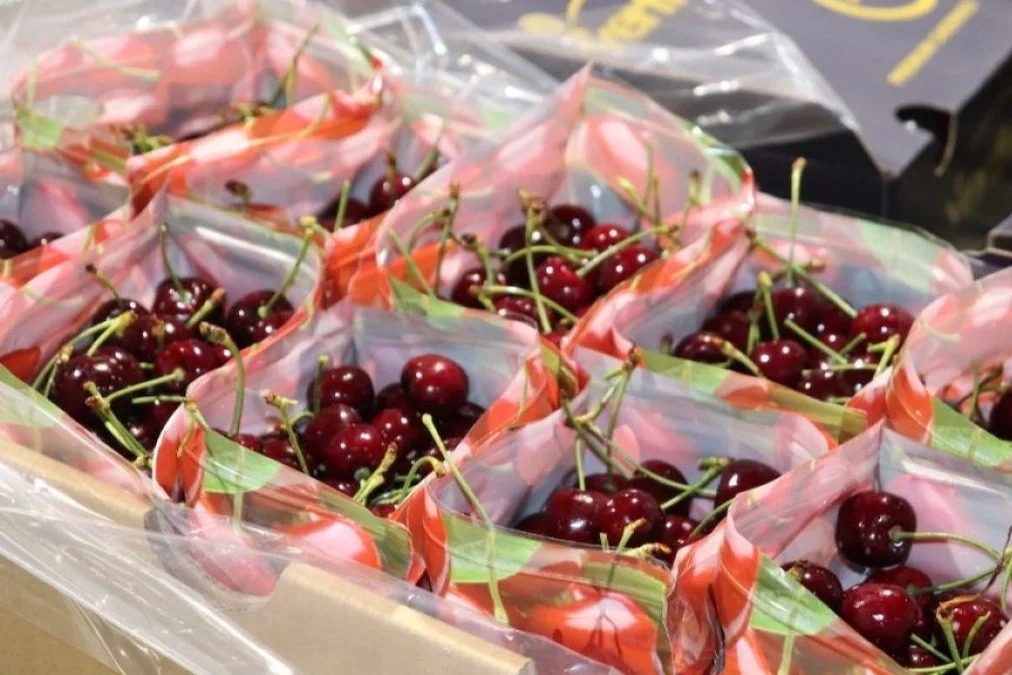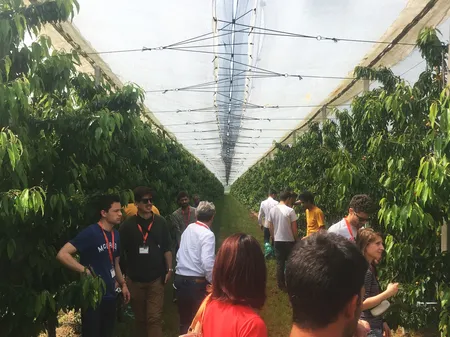In an arid region of southern Russia, specifically in the Volgograd area, a team of researchers studied how soil moisture influences the growth and development of young sweet cherry seedlings.
Young plants, in fact, need a good supply of water and nutrients in order to develop both their root system and their aerial parts.
The objective of the research was to find an effective irrigation regime to obtain healthy, vigorous, and commercially viable seedlings, while optimizing the use of water resources in an agricultural environment with limited water availability.
Research context and setup
The study was conducted over five years, from 2017 to 2021, at a laboratory specializing in variety selection and nursery production.
The variety chosen for the experiment is "Vasilisa," grafted onto a rootstock called "Magalebskaya" (also known as "Antipka"), commonly used for its adaptability to harsh climates.
The core of the research focused on localized (drip) irrigation, performed in three different modes.
Irrigation modes and fertilization
In the first mode, considered as a reference, soil moisture was maintained at 80% of its water-holding capacity in the upper part of the soil, up to a depth of 40 cm.
In the second mode, the moisture was initially maintained only in the top 20 cm and was later extended to 40 cm, always at 80%.
In the third variant, however, a dynamic approach was applied: in the first phase, like the second, but in the final growth phase, the humidity dropped to 70% at a depth of 40 cm.
Targeted fertilization was also combined with these irrigation strategies.
Initially, a simple mineral fertilizer (containing nitrogen and phosphorus) was used, while later a chelated product called "Master" was added to further stimulate growth.
Results and observations
The results were very interesting. The seedlings treated according to the second and third methods showed more vigorous growth compared to those irrigated traditionally.
Specifically, the weekly growth of the main stem between June and August was higher, with differences reaching up to 10 cm.
Additionally, it was observed that all seedlings, regardless of treatment, showed a single phase of intense growth, a positive sign indicating the absence of water stress.
Not only the height, but also the development of the root system and canopy were more abundant in the differentiated treatments.
Commercial implications and conclusions
The seedlings had longer and stronger roots, and the canopy appeared more balanced and denser.
This also had a direct impact on the commercial classification of plants: in the most effective treatment, up to 96% of the seedlings fell into the "first quality" category.
In light of these results, the researchers conclude that using an irrigation strategy adapted to the plant's growth stage, combined with adequate nutrition, allows to produce stronger, more uniform sweet cherry seedlings ready to be transplanted or sold.
Furthermore, this approach also allows for more rational water use, a resource that is increasingly scarce in many agricultural areas.
The study therefore suggests a practical and sustainable model for nurseries operating in arid environments, where careful resource management is crucial for agronomic and economic success.
Source: Nikolskaya O.A., Seminchenko E.V. (2025). The Effect of the Depth of Soil Moisture on the Growth and Development of Cherry Seedlings. Indian Journal of Agricultural Research. 59(3): 454-457. doi: 10.18805/IJARe.AF-821.
Image Source: SL Fruit Service
Melissa Venturi
University of Bologna (IT)
Cherry Times - All rights reserved












